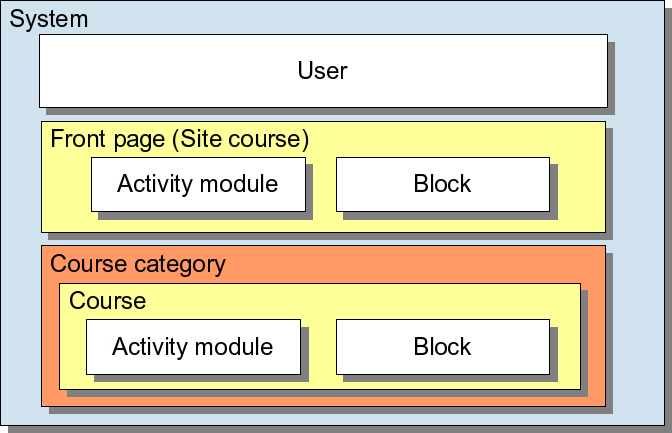Context
Template:Moodle site - basic structure
Please refer to these notes before editing this page.
A context is a "space" in Moodle. Together, they define the navigational structure of a Moodle site. A course can be a context, so can an activity, resource or block.
A course can have many contexts in its space. These might include lesson, assignment, forum and quiz modules and blocks. Or for example, Question bank's question categories are contexts.
Role and contexts
A context is combined with Role permissions to define a user's capabilities on any page in Moodle. Typically contexts have their own organization structure which allow a user's role to be passed along to the context "below" but not to the one above it.
It is possible to assign a user different permissions based upon a specific context. For example, a user might be given the role of "student" for a course but be given a teacher's role in the context of one specific forum. Or a user can be a teacher of one course and a student in another course.
Many Moodle contexts have a place to grant exceptions to specific roles.
Graphic showing contexts within contexts
The image below shows a few contexts and their relationships. The "System" or Moodle site is the overall context. The user is defined iniially in this context.
- The System context has 2 contexts under it, with other context under them
- The Front page context has
- An activity module context and
- A block context within it
- The Course Cateory context has
- A Course context within it. The course context has
- An activity module context and
- A block context within it
- A Course context within it. The course context has
- The Front page context has
(Source: Development:Roles#Context)
See also
Moodle Docs
- Beginning Administration FAQ
- Roles FAQ
- Development:Roles#Context
- Development:Roles and modules#Context
- Roles and capabilities
- Role permissions
Forum discussions
